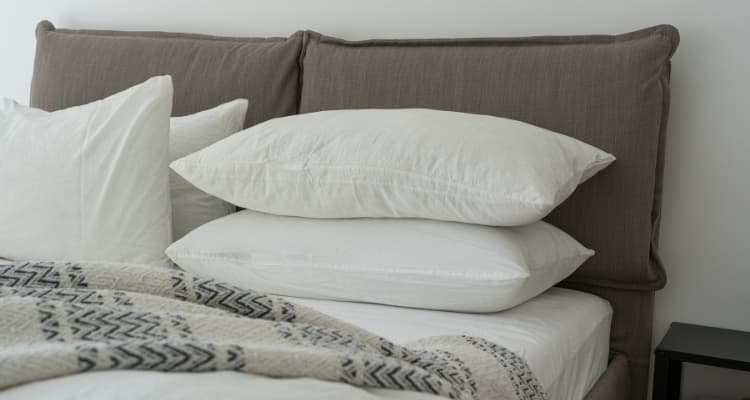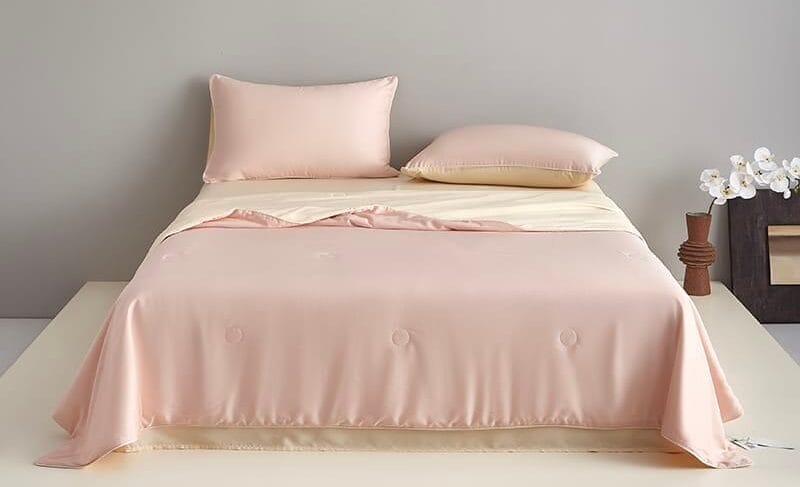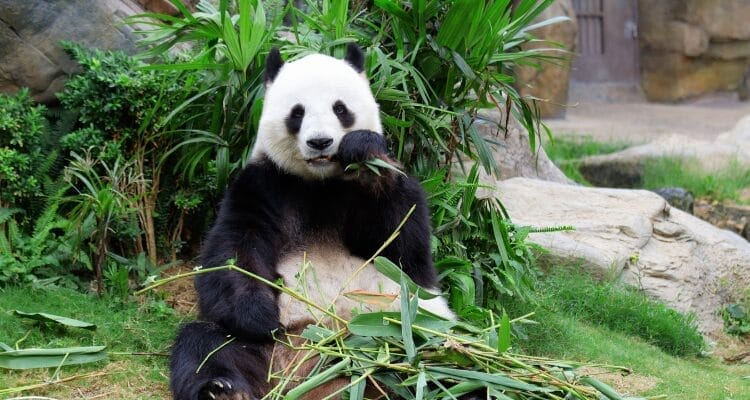Blog
Exploring Bamboo Fabric: A Sustainable Textile Solution
Sustainability is now a key focus for many businesses, especially in textiles. Bamboo fibre has become popular for its eco-friendly and versatile qualities. It’s widely used in products like bedding, towels, bath items, and bamboo mattress pads. Bamboo fabric offers clear benefits for manufacturers, designers, and brands looking to go green.
What Is Bamboo Fibre?
Bamboo fibre is made from the bamboo plant, which is known for its rapid growth and minimal water usage. Some species of bamboo, especially tropical varieties like Moso bamboo, can grow incredibly fast—up to 35 inches (about 91 cm) in a single day under ideal conditions.
It’s a natural material that can be processed into soft, durable fabric. The process may vary, but it usually involves either mechanical or chemical methods to transform the bamboo into fibre. A fabric that’s not only eco-friendly but also versatile enough for many uses.
What Can Bamboo Be Used For?
People have used bamboo for thousands of years, especially in Asia. Ancient Chinese, Japanese, and Indian cultures used bamboo for building homes, making paper, tools, weapons, and even musical instruments. In China, bamboo paper dates back to 200 BCE.
Bamboo is incredibly versatile and can be used for a wide range of applications, including food, construction, crafts, furniture, paper and paper towels, apparel, and even medical care products and medicine. Its fibres create soft, breathable fabrics. Bamboo is also used in eco-friendly products like toothbrushes, utensils, and reusable straws due to its fast growth and sustainability.

How Is Bamboo Fabric Made?
Bamboo fabric is made by breaking down the bamboo plant into pulp. That pulp is then either mechanically crushed and spun into yarn or processed with solvents to create a soft fibre. The chemical method makes bamboo viscose, while the cleaner, closed-loop process gives you bamboo lyocell. Both end up as smooth, breathable fabrics used in all kinds of textiles.
Types of Bamboo Fibre Textiles
Bamboo Rayon (Viscose)
Bamboo rayon, or viscose, is the most common type of bamboo fabric. This process uses chemicals to break down the bamboo pulp into fibres. Whilst it’s not the most eco-friendly method, the result is a fabric that’s incredibly soft and smooth. It’s lightweight and breathable, making it an excellent choice for apparel, towels, and bed linens.
Typical uses: Eco-friendly clothing, home textiles, and bath products.
Bamboo Lyocell
Lyocell is made through a closed-loop process, which uses less water and fewer chemicals than rayon. This makes it a more sustainable option. Bamboo lyocell is naturally antibacterial and highly durable, which makes it ideal for activewear or high-end bedding.
Typical uses: Activewear, premium clothing, and bedding.
Bamboo Hemp Blends
When bamboo is blended with hemp, the result is a durable, eco-friendly fabric. This blend has the best of both worlds: the softness of bamboo and the strength of hemp. It’s antimicrobial, resistant to odours, and built to last.
Typical uses: Workwear, outdoor gear, and durable home goods.
Bamboo Fleece
Bamboo fleece is made by brushing bamboo fibres to create a soft, plush texture. This fabric is warm, absorbent, and ideal for colder climates. It’s perfect for items like baby blankets or cosy loungewear.
Typical uses: Baby products, loungewear, and blankets.
Recent article: 100% Cotton vs Poly Cotton

Advantages of Bamboo Fibre Textiles
Eco-Friendly Manufacturing
Bamboo grows quickly, doesn’t require pesticides, and uses less water compared to cotton. It can decompose in the natural environment after disposal, reducing white pollution. Some bamboo fibres use closed-loop production processes (e.g., Lyocell process). This makes it an environmentally responsible choice for manufacturers looking to reduce their carbon footprint.
Health Benefits
Bamboo fibre contains “Bamboo Kun”, a natural antibacterial ingredient that inhibits the growth of bacteria such as E. coli and Staphylococcus aureus, making it suitable for sensitive skin and baby products. Its moisture absorption rate is 3.5 times higher than cotton, making it ideal for summer or sportswear. The cross-section of the fibre is covered with micropores to help evaporate sweat quickly and keep you dry.
Also, bamboo fibre is often considered hypoallergenic because it’s smooth, breathable, and gentle on the skin. It resists dust mites and mould, making it a good option for sensitive folks. Still, reactions vary, so it’s best to test if you have severe allergies.
Rising Consumer Demand
Sustainability is a key trend. Consumers are more aware of the environmental impact of the products they buy. By offering bamboo fibre products, businesses can cater to this demand and improve their eco-friendly image.
Long-Term Durability
Bamboo fabric is durable and can last longer than traditional fabrics. This means your customers get better value for their money, and your brand can promote products that stand the test of time.
Versatility Across Markets
Bamboo textiles aren’t limited to one industry. Whether you’re in fashion, home goods, or bedding, bamboo can be used across a wide range of products. This versatility opens up new possibilities for businesses to expand their product lines.
How to Wash Bamboo Textiles?
This process helps retain softness, colour, and structure—essential for long-term use in hotels, spas, or retail.
Washing:
- Sort by fabric type & colour – Keep bamboo separate from heavy or abrasive fabrics.
- Use front-load industrial washers – They’re gentler and more efficient.
- Water temperature: Cold to warm (max 40°C / 104°F).
- Detergent: Mild, liquid, eco-friendly. Avoid bleach, softeners, and enzymes.
- Cycle: Gentle or delicate. Use low agitation to protect fibres.
- Load size: Don’t overfill; leave space for movement and even cleaning.
Drying:
- Tumble dry on low or cool air – High heat causes shrinkage and weakens fibres.
- Use dryers with moisture sensors to prevent overdrying.
- Remove promptly to minimise wrinkles.
- Avoid overdrying – Slight dampness is better if pressing or folding after.
- Air dry flat or on racks if possible, especially for delicate bamboo blends.
Extra Tips:
- Regularly clean machines to avoid fabric damage caused by buildup.
- Use mesh bags for smaller or more delicate bamboo items.
- Avoid harsh chemicals used in traditional commercial laundries.

Bamboo vs. Cotton vs. Polyester
| Feature | Bamboo | Cotton | Polyester |
| Softness | Very soft, silky feel | Soft, varies by type | Smooth but less breathable |
| Breathability | Excellent | Good | Poor |
| Moisture Wicking | Strong | Moderate | Weak |
| Durability | Moderate (can pill) | High (especially combed) | Very high |
| Shrinkage | High if heat-dried | Moderate | Low |
| Wrinkle Resistance | Moderate | Low | High |
| Eco-Friendliness | Depends on processing | Organic = good, otherwise mixed | Low (petroleum-based) |
| Allergy Friendly | Yes, naturally hypoallergenic | Usually fine | No |
| Care Needs | Gentle care | Easy | Easy |
| Cost | Moderate to high | Varies (basic to premium) | Low |
Related reading: Bamboo vs Cotton Mattress Topper Cover
Key Considerations for Your Business
Environmental Impact of Chemical Processing
Not all bamboo fibre is created equally. The chemical process used to make bamboo rayon can be harmful to the environment. However, newer, more eco-friendly processes like lyocell are available, so it’s essential to choose the right type of bamboo fabric.
Consumer Education
Some consumers may not fully understand how bamboo fibres are processed. There can be misconceptions about bamboo fabric’s sustainability, so businesses need to educate their customers about the benefits of bamboo textiles.
Certifications
Look for certifications like OEKO-TEX, GOTS, or FSC-certified bamboo to ensure the fabric meets high environmental and ethical standards.
Customisation Opportunities
Bamboo fabric offers customisation options so that businesses can create unique, eco-friendly products. Whether you’re looking for specific colours, textures, or blends, bamboo textiles can be tailored to fit your needs.
QL Textiles
QL Textiles provides bamboo bedding sets, breathable sheets, and long-lasting bamboo fibre sponge pads for wholesale and custom orders. These eco-friendly products deliver comfort and durability, perfect for hospitality, wellness, or retail sectors. Certified by OEKO-TEX, they are crafted for bulk use in partnership with a bamboo textile manufacturer.

FAQs
Is bamboo fabric toxic?
It depends on how it’s made. Raw bamboo fibre (like bamboo linen) is safe. But most bamboo fabric on the market is bamboo viscose, which is produced using chemicals. If the process isn’t done cleanly, there could be leftover residue. Look for OEKO-TEX® or closed-loop processed options if you’re worried.
Does bamboo fabric shrink?
Yes, it can. If you use high heat when washing or drying, expect shrinkage—sometimes up to 10%. Cold water and low heat are the way to go.
What’s the downside of bamboo fabric?
It’s delicate. It pills if washed roughly or mixed with heavy stuff like jeans. Also, most bamboo fabric is rayon, which means it requires chemical processing to be made. That raises questions for eco-conscious folks.
Is bamboo fabric better than cotton?
It depends on what you want. Bamboo is softer and often more breathable. Cotton is more durable and easier to care for. For feel and moisture control, bamboo usually wins. For toughness, cotton’s got the edge.
Are bamboo beds comfortable?
Suppose you’re talking sheets or bedding, yes—very. The fabric is smooth, soft, and breathable. Feels somewhat like silk but lighter.
Does bamboo bedding keep you cool?
Yes. It wicks away sweat and lets air move through. Great for hot sleepers or warm climates.
Is bamboo bedding good for allergies?
It can be. The fabric resists dust mites and mildew better than cotton. It’s smooth, so it doesn’t trap stuff as easily. People with sensitive skin usually do well with it.
Is bamboo bedding good?
In general, yes. It’s soft, cooling, and looks nice. Just treat it gently and wash it properly to keep it that way.
Can a bamboo mattress get bed bugs?
Sure can. Bed bugs don’t care what your bed’s made of. They go after people, not fabric types. A bamboo cover won’t stop them—but a good mattress protector might help.
By the way, how much bamboo does a panda eat a day?
A lot! According to research, giant pandas spend 10-14 hours a day eating bamboo in the wild. Adult giant pandas eat 30-60kg of bamboo shoots a day in spring, about 40kg (18 stone) on average; in autumn, because bamboo leaves are more nutritious and have less crude fibre, giant pandas only need to eat 10-14kg (1.5 to 2 stone) of food a day.
Conclusion
Bamboo fibre textiles are a game-changer for businesses that want to offer sustainable and high-quality products. From its eco-friendly origins to its versatility in a variety of industries, bamboo fabric is an option that’s here to stay. Whether you’re in fashion, home goods, or outdoor gear, bamboo can offer a solution that’s both sustainable and attractive to your customers.
Conclusion
Sustainability is now a key focus for many businesses, especially in textiles. Bamboo fibre has become popular for its eco-friendly
Leave a Comment


 Nov 27, 2025
Nov 27, 2025 
